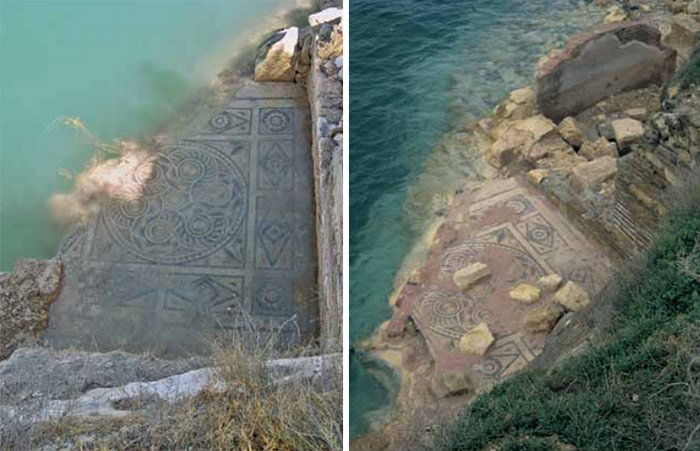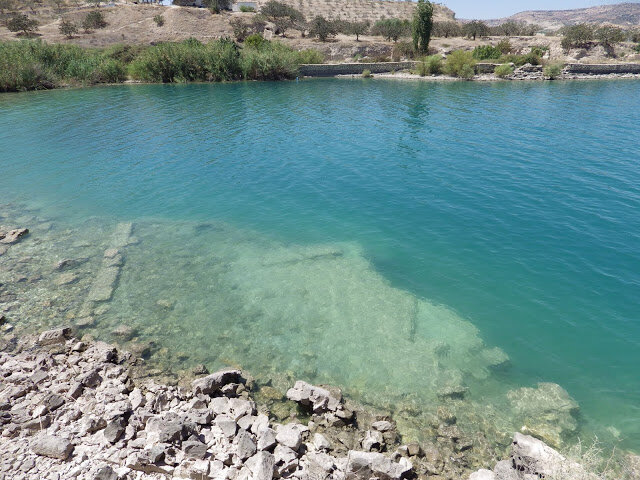Zeugma was one of the Roman Empire’s most significant and prosperous cities outside Europe. Strategically located by a bridge spanning the River Euphrates, it served as a critical hub on the Silk Road, connecting the empire to Asia. However, after an invasion and a catastrophic earthquake, the city was abandoned and eventually forgotten.
The city was originally founded in 300 BC by Seleucus I Nicator, one of Alexander the Great’s commanders. It later came under Roman control in 64 BC when the Roman general Pompey conquered it. Zeugma’s golden era spanned several centuries, during which it became a thriving trading center. A full legion of Roman troops was stationed there, guarding the empire’s eastern frontier. The city also benefited economically from a series of pontoons that functioned as a toll bridge, crossing the Euphrates, which marked the western border of the Persian Empire.

Wealthy merchants and diplomats constructed grand villas along the river, taking advantage of the cooler temperatures in an otherwise arid and sweltering region. Skilled artisans from Rome were brought in to craft intricate mosaics, often depicting water scenes or mythological themes from ancient Greek and Roman culture. Many of these mosaics were unique to Zeugma and showcased the city’s artistic sophistication.
Despite being invaded by the Persians in 253 AD, much of the city remained intact. However, a massive earthquake soon after caused significant destruction, burying the buildings under layers of rubble. The interiors of many structures have been compared to those of Pompeii, as both were preserved by natural disasters.
Zeugma’s rediscovery began in 1987 when antiquity smugglers inadvertently alerted the nearby Gaziantep Museum. While tunneling into an ancient Roman villa, they uncovered remarkably well-preserved mosaics, household items, and other artifacts. This discovery sparked small-scale archaeological efforts.
In the late 1990s, the Turkish government announced plans to construct a dam on the Euphrates River, just two kilometers from Zeugma. This project threatened to completely submerge the largely unexcavated site. As the floodwaters rose, the urgency to save the city’s treasures intensified. A collaborative effort involving European and American institutions ensued, with archaeologists working around the clock to recover Zeugma’s artifacts, including its stunning mosaics.
One remarkable mosaic, featuring a depiction of Oceanus and Tethys, was saved and is now displayed in the Gaziantep Mosaic Museum. The museum is home to a world-class collection of mosaics recovered from Zeugma. Some pieces, carefully restored, are mounted on walls for close viewing, while others are set beneath transparent glass walkways, allowing visitors to appreciate their intricate details.
Excavations continue at higher elevations of the site, which remain above the floodwaters. Visitors to Zeugma can witness ongoing archaeological work by traveling a small, winding road off the E90 Sanliurfa-Gaziantep route near Belkis. A short walk leads to a large hangar-like structure, housing an innovative multi-level viewing platform that protects the remnants of five Roman houses. Visitors can observe original painted walls, water and sewerage systems, and a few mosaics still in situ, offering a glimpse into daily life in this ancient city.

The Gaziantep Mosaic Museum, inaugurated in 2011, showcases Zeugma’s treasures with meticulous care. The centerpiece of the collection is the famous “Gypsy Girl” mosaic, believed to represent Gaea, the goddess of the Earth. This masterpiece is celebrated for its hauntingly realistic eyes that seem to follow the viewer from every angle. The “Gypsy Girl” was one of the last mosaics recovered from Zeugma, discovered hidden under layers of dirt in a villa previously looted by traffickers. Its survival is a testament to the dedication of archaeologists and conservators.

Zeugma’s legacy as a vibrant cultural and economic hub endures through the artifacts displayed in the Gaziantep Mosaic Museum. Though much of the city now lies beneath the Euphrates, its preserved mosaics and ruins offer a unique window into the past. For those willing to venture off the beaten path, Zeugma provides an unparalleled opportunity to connect with the history of the Roman Empire and marvel at the artistry of its ancient inhabitants.





